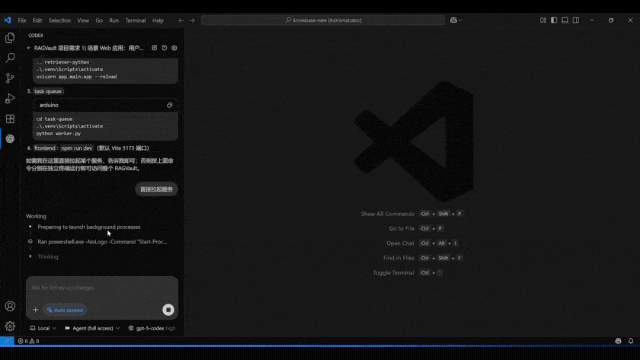AI Public Opinion Analysis Open-Source Tool Gains 4,000+ Stars in One Day
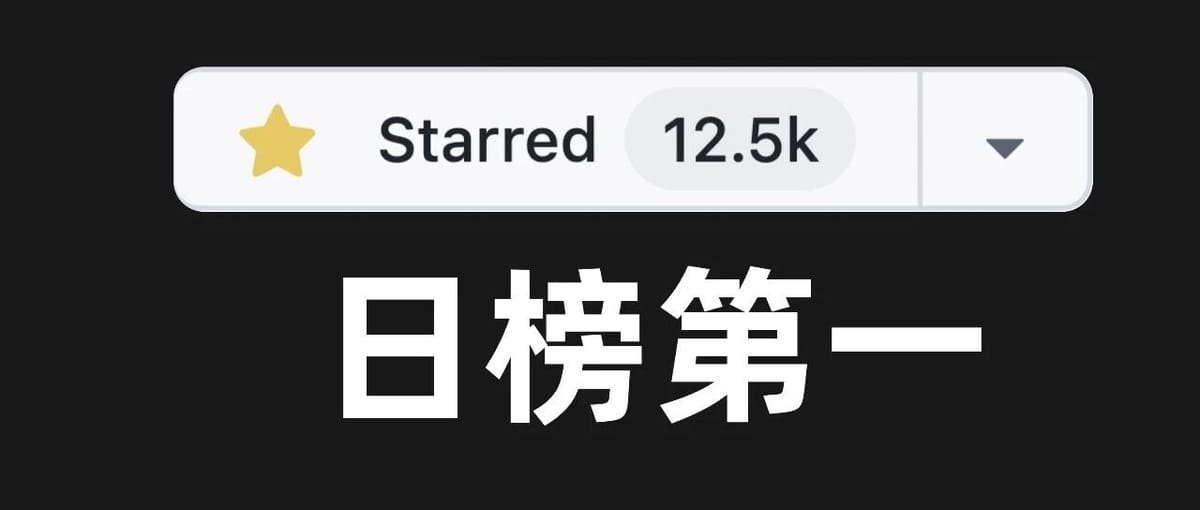
BettaFish: Multi-Agent Public Opinion Analysis

Looking at today’s GitHub trending list, one open-source project is leading the way: BettaFish, also known by its codename "MicroSentiment".
This tool is positioned as a multi-agent public opinion analysis assistant, aiming to:
- Break the “information bubble”
- Restore a complete picture of public sentiment
- Predict future trends
- Assist with decision-making
---
What It Does in Simple Terms
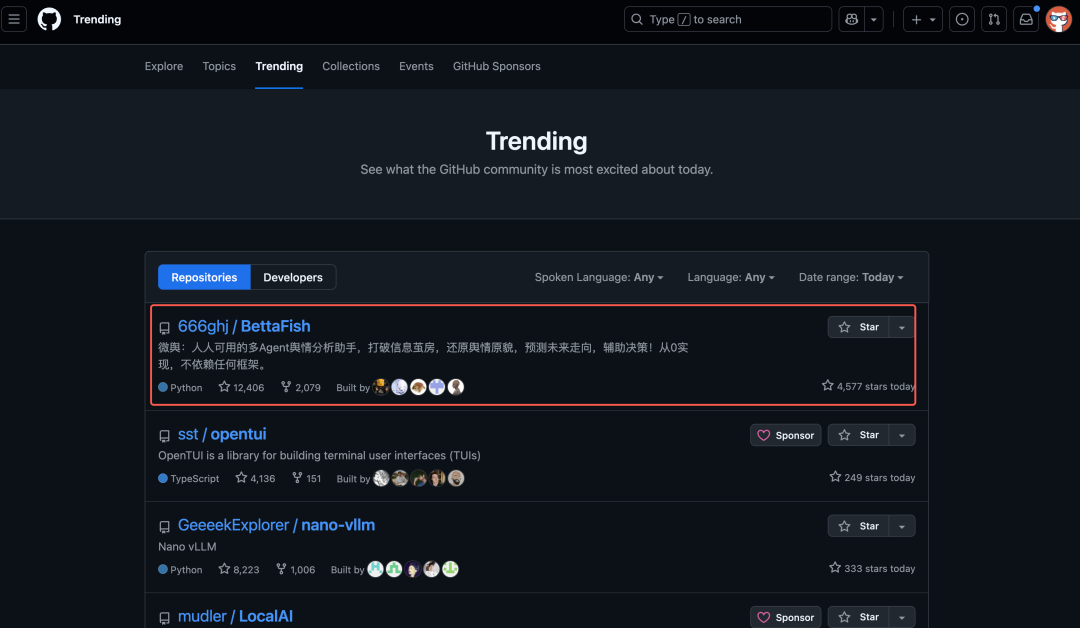
BettaFish unites multiple AI agents — each with distinct responsibilities — to simulate professional team collaboration for complex sentiment analysis.
With it, you can see how major media platforms perceive a brand or event.
- Captures real-time trending content
- Analyzes user comments at scale
- Surfaces authentic and widespread voices from the public
The project’s popularity has surged: GitHub Stars jumped from 1K to 12K in just a few days.
---
01 — Project Overview
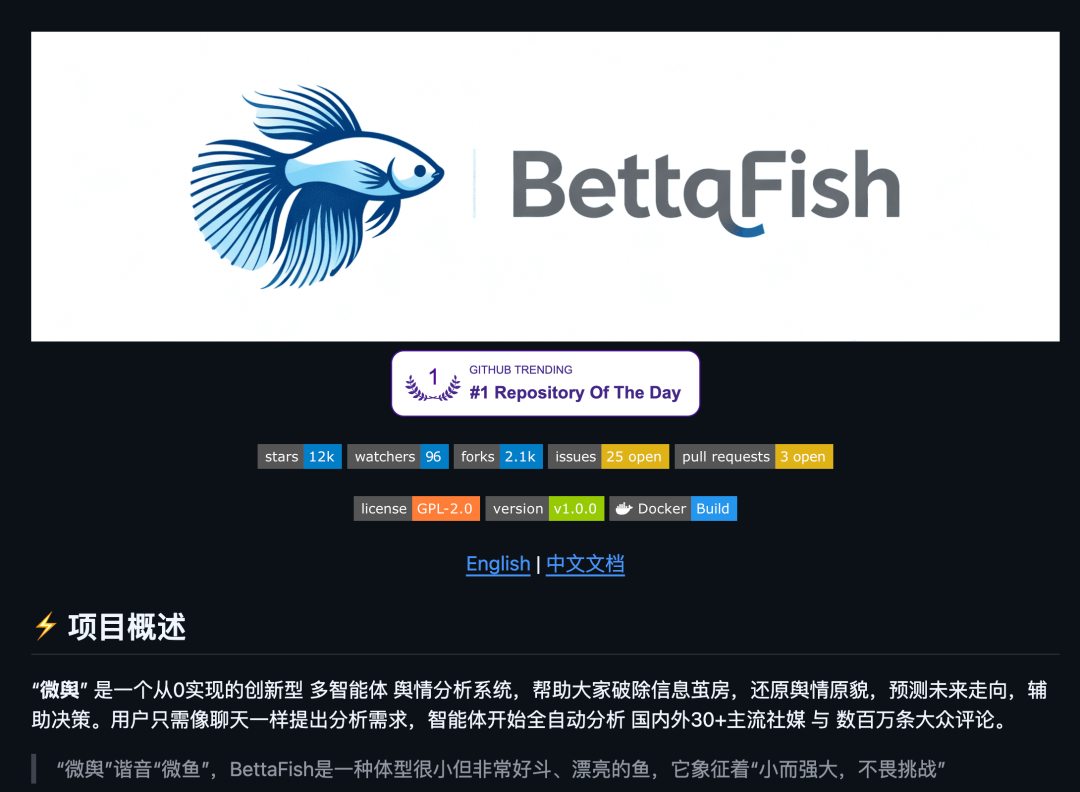
Example: Research on Wuhan University
If tasked with analyzing public sentiment on Wuhan University:
- AI Data Collection
- An always-on crawler collects content from Xiaohongshu, Weibo, Douyin, etc.
- Multi-Agent Collaboration
- AI agents summarize and cross-analyze the data.
- Comprehensive Reporting
- An 8-chapter, 25-section report covers:
- Key recent events
- Brand exposure trends
- User profile analysis
- Risk and opportunity assessment
Preview of the first three chapters:

---
02 — How It Works
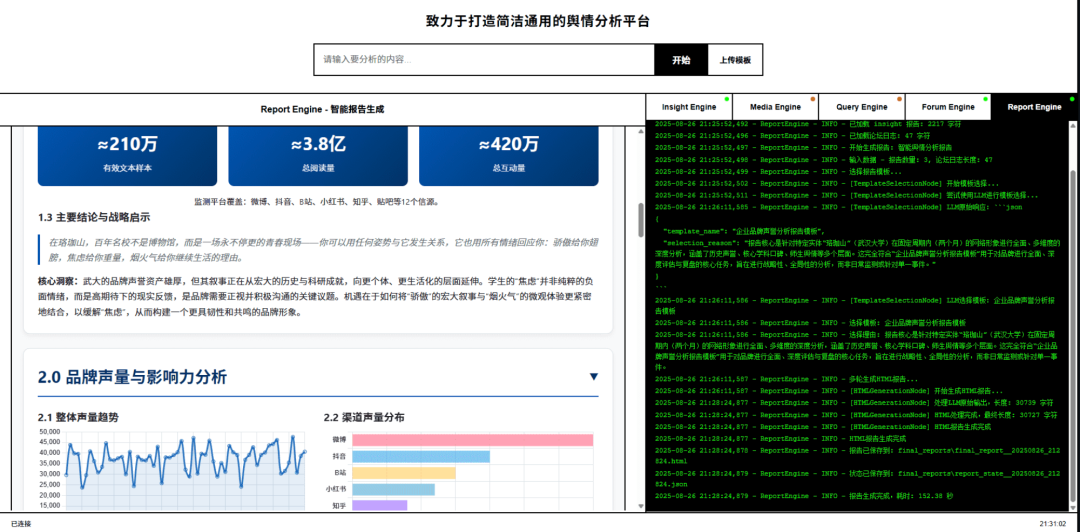
Once a research topic is provided, four core agents collaborate:
- Query Agent – Finds diverse, broad information sources.
- Media Agent – Understands text, image, and video content.
- Insight Agent – Analyzes private/internal datasets.
- Report Agent – Writes structured analytical reports.
Unique Collaboration Mechanism
BettaFish uses a forum-style debate model, with a moderator to manage discussions and chain-of-thought reasoning between agents — overcoming the limitations of single-model viewpoints.
Architecture diagram:
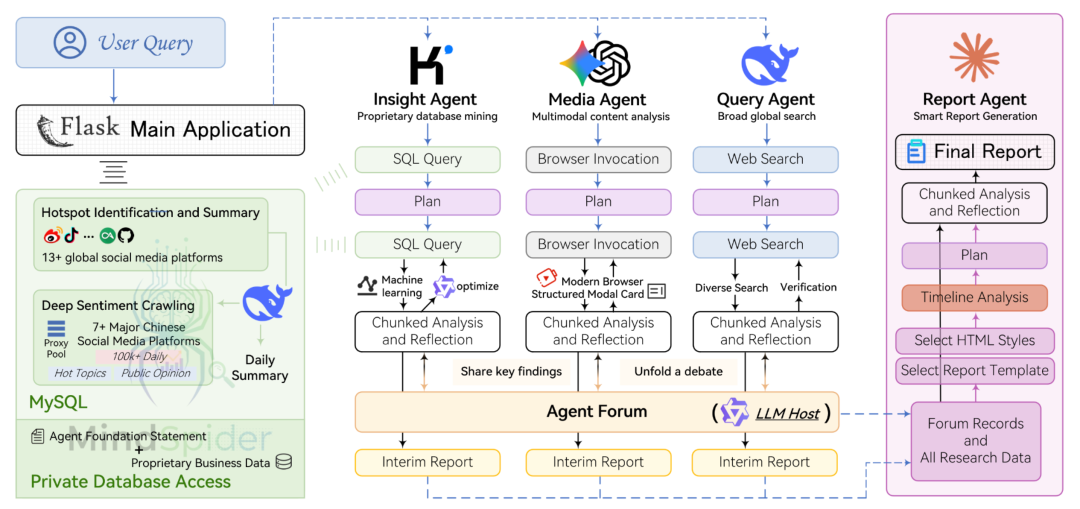
---
03 — Open-Source Background
The creator is a university student who originally built it as a course project.
- Upon open-sourcing, it gained wide attention
- The creator has shared technical notes on Xiaohongshu
- The project led to an internship opportunity
Search for BaiFu on Xiaohongshu for more insights.
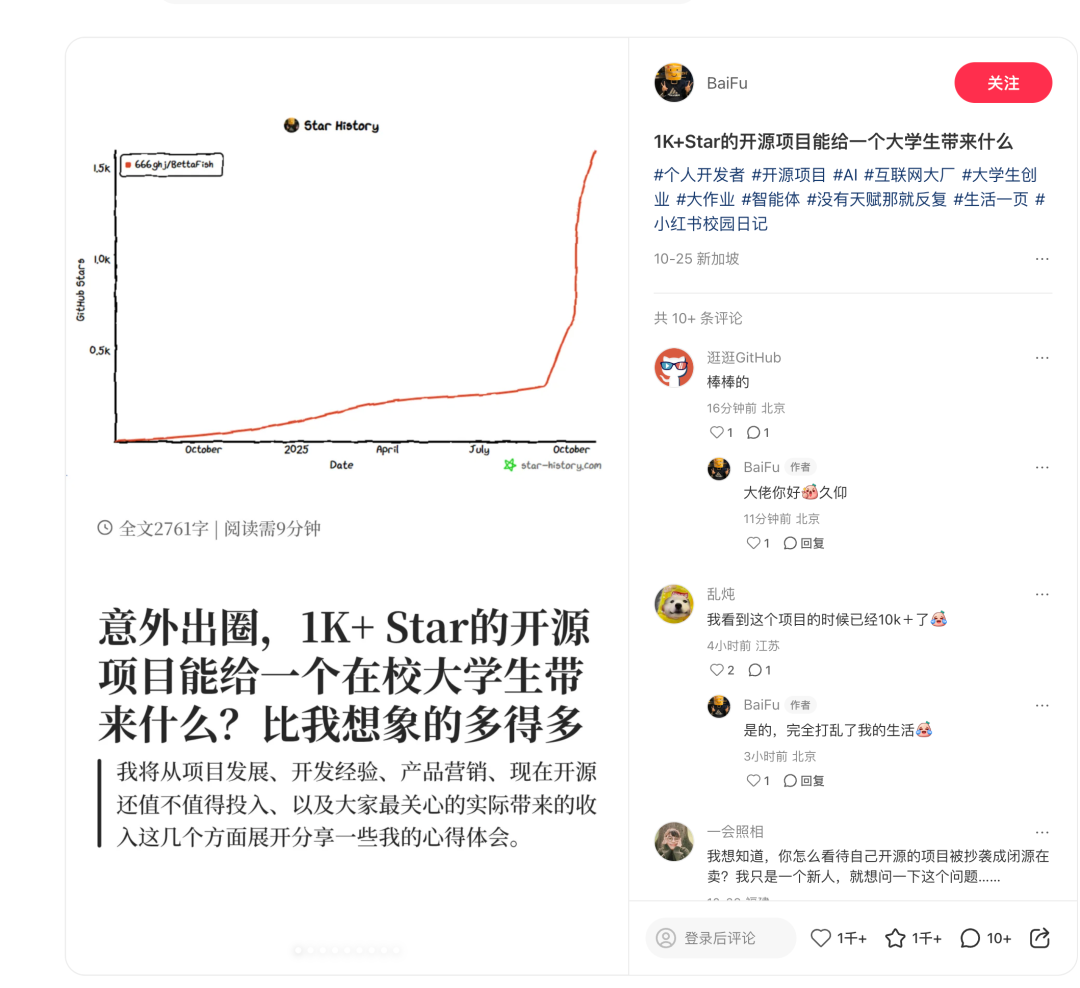
---
04 — How to Deploy
The GitHub README is detailed — follow its instructions step-by-step.

---
05 — Follow “Wander GitHub”
This account regularly shares unique open-source projects.
- On WeChat, follow Wander GitHub
- Send a message to the backend to get curated content without searching archives
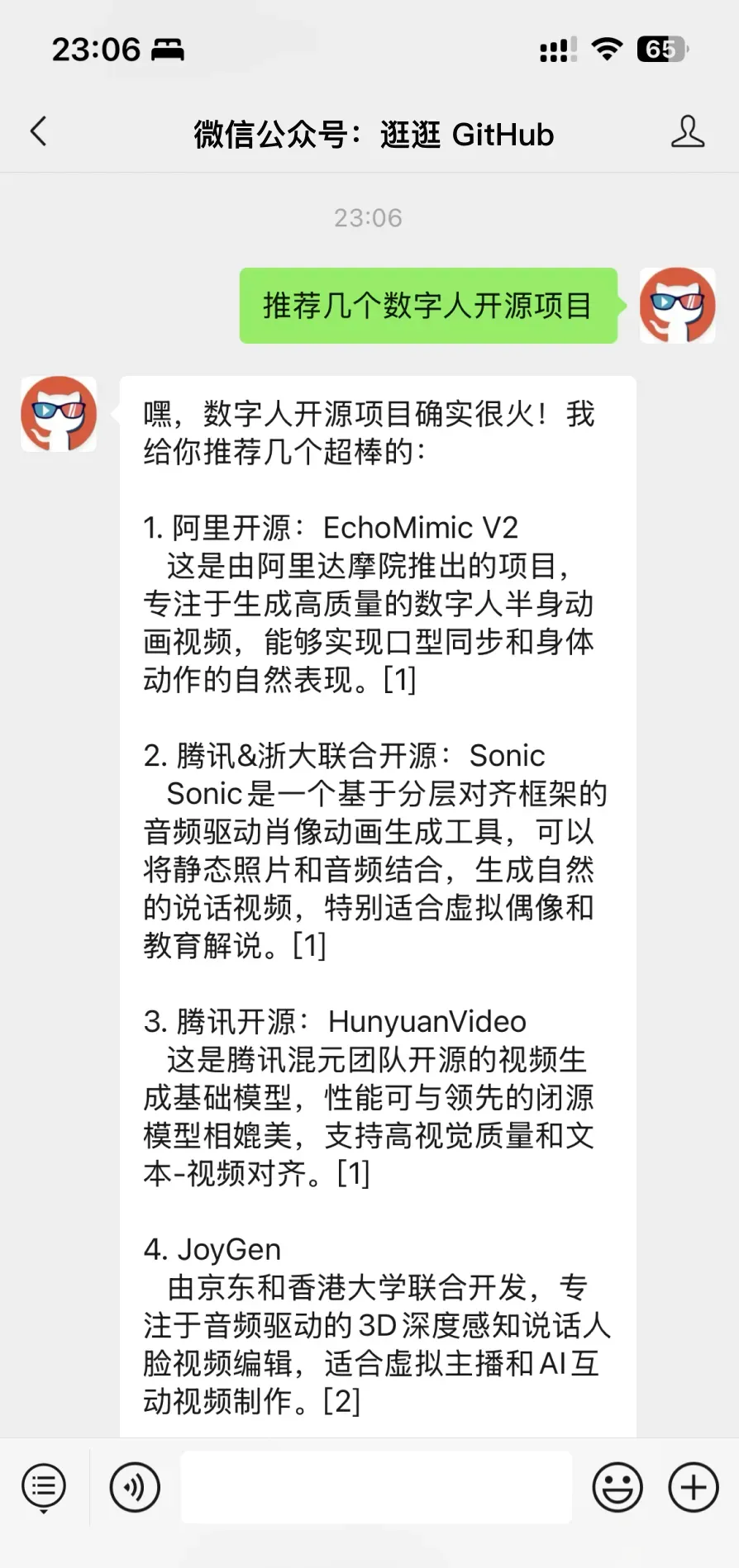
---
In a Larger AI Context
BettaFish is a strong example of how multi-agent AI collaboration can revolutionize public opinion analysis.
Similarly, platforms like AiToEarn官网 offer open-source solutions for creators, enabling:
- AI content generation
- Cross-platform publishing (Douyin, Kwai, YouTube, Instagram, X/Twitter)
- Analytics and model ranking
With its AiToEarn开源地址, creators can move efficiently from insight to global distribution — making AI creativity powerful and profitable.
---
Would you like me to also create a quick-start deployment checklist for BettaFish so readers can try it immediately? This would make the article more actionable.



